The Supermicro SYS-5019D-4C-FN8TP that we are reviewing today is not necessarily the newest system. Indeed, Supermicro actually did not loan this system to us, this is just a system that we deploy and had an opportunity to review. The reason we use this platform is that it has a moderately powerful Intel Xeon D-2123IT, up to 512GB of memory capacity (we generally use 64GB or 128GB), and lots of networking. This system actually has four 10GbE NICs and four 1GbE NICs onboard with room for another add-on card as well as wireless networking expansion via slots. Skylake-D is around the middle of its cycle with Ice Lake-D announced, but not available yet so it is still the most current generation. We tend to use these short-depth Supermicro servers as firewall appliances, so let us take a look and see why.
Supermicro SYS-5019D-4C-FN8TP Hardware Overview
In our recent reviews, we have been separating internal and external views. With this server, it is so compact we are going to cover these in a single section. In 2018 we had our Supermicro X11SDV-16C-TP8F review. That platform uses the same motherboard, just with a 16 core Xeon D instead of the 4 core Xeon D-2123IT we have here. We also reviewed this X11SDV-4C-TP8F motherboard in another chassis in our Supermicro E300-9D-4CN8TP review. As a result, we are going to go through this a bit quicker than normal.
Update 2021-10-02: We had a video that we did not link in this original article. It was an experiment to see how it would perform just on the YouTube channel for 72 hours without linking it here.
As always we suggest opening the video in a new window, tab, or the app for a better viewing experience on YouTube.
The system itself is housed in a Supermicro CSE-505-203B chassis. That means we have a 465mm deep 1U platform (~18.3″) that offers front I/O. That front I/O is clearly a big selling point of this server.
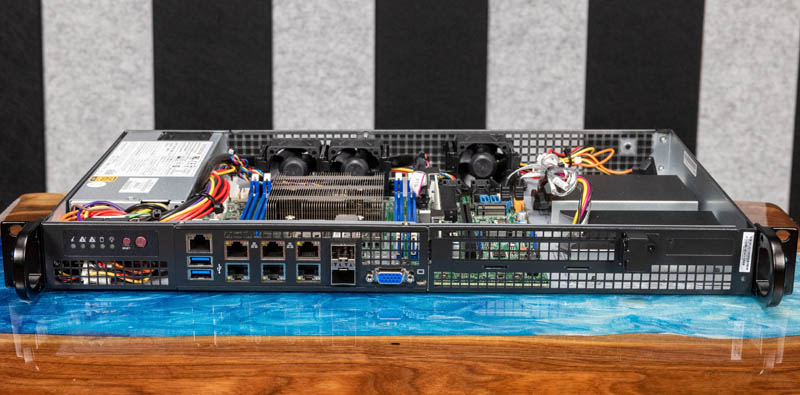
We have a management port above two USB 3.0 ports with a VGA port on the other end of the block for local and remote management duties. Next to the USB ports we have four Intel i350-am4 based 1GbE NICs. There are then 10GbE NICs. Two are 10Gbase-T NICs and two are SFP+. With a total of eight network connections and the ability to span both copper and fiber networks, there is a reason we at STH, and others in the industry, use this for network appliances.
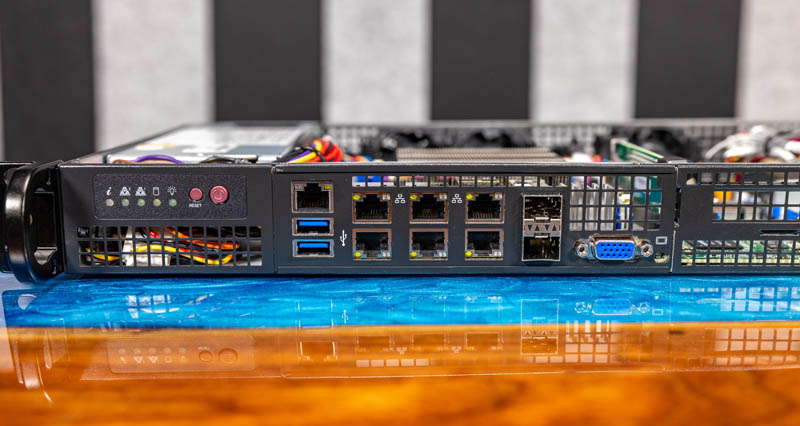
Expansion on the front panel does not stop there. There is even a full-height expansion slot so one could add a 25GbE NIC, or perhaps a quad 10GbE SFP+ NIC as well, adding even more flexibility.
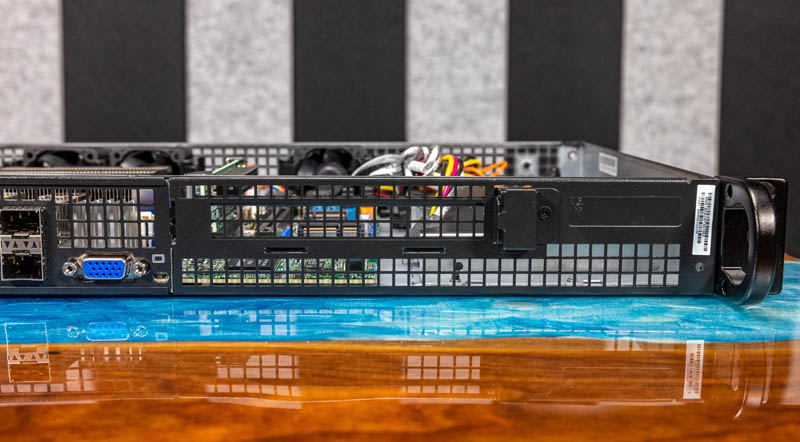
Powering all of this is the Supermicro X11SDV-4C-TP8F motherboard that we captured in the old STH Blue Door Studio. The motherboard itself is a FlexATX design meaning it is approximately 9″ x 7.5″. This form factor is designed specifically to work in short-depth chassis, just like the one this system is housed in. Further, the platform has several small features that nod to it being the base platform for several OEM designs.
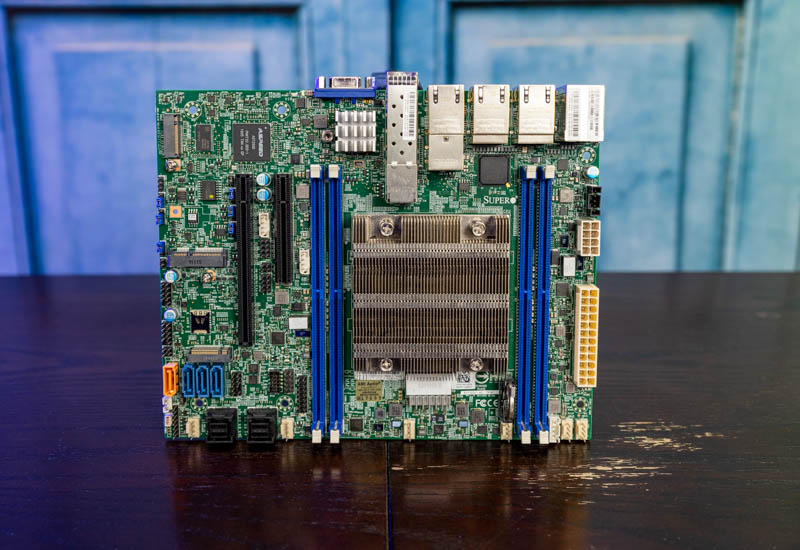
We often get asked if one can purchase the motherboard and chassis separately. This is completely possible. We will quickly note though that one will need to source a number of surrounding bits in the power and cooling domain and perhaps a rear I/O plate. An example of this is the cooling shroud that keeps the Xeon CPU bathed in airflow from two fans.
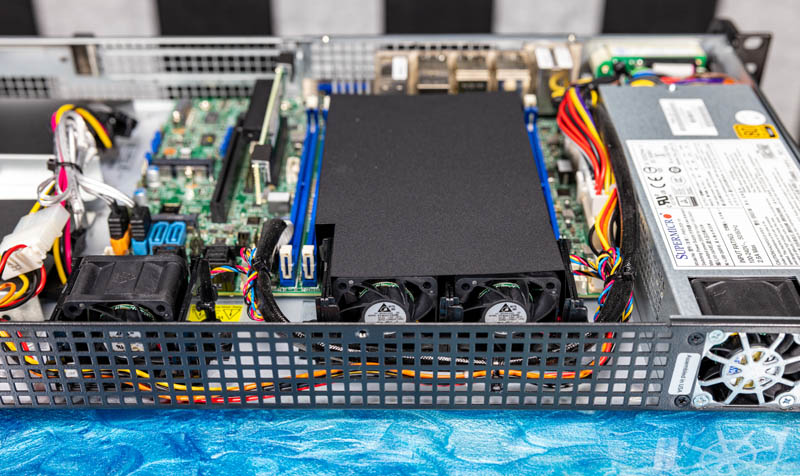
Onboard we have an Intel Xeon D-2123IT. This is a 4 core/ 8 thread SoC that operates at up to 60W TDP. One item we should note is that these CPUs generally use more power than the Xeon D-1500 processors, but they have a very nice feature. The cores are Skylake like the first generation Intel Xeon Scalable parts, and the I/O is effectively handled by the same IP found in the Lewisburg PCH found on first and second-generation Intel Xeon Scalable systems. Given this is effectively the mainstream platform for Intel from 2017 to 2021 (and the Lewisburg Refresh for the Cooper/ Ice platform has some of the same IP) that means this platform has excellent software support at this point.
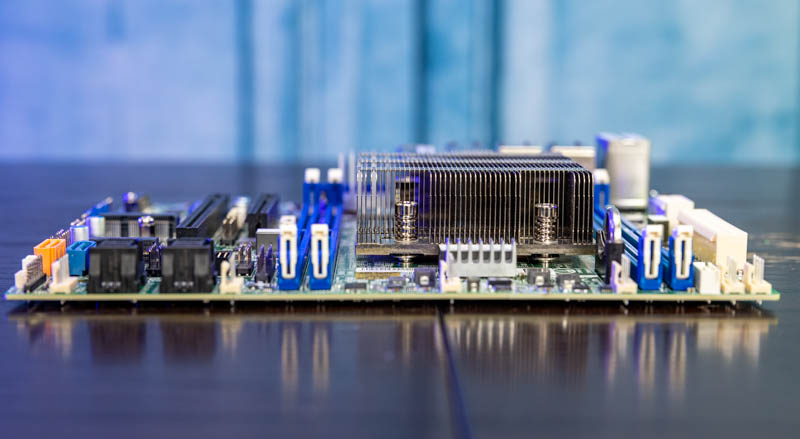
Flanking the Xeon D-2123IT we have four DDR4 DIMM slots. One can populate up to 4x 128GB LRDIMMs in the platform for 512GB of memory. This also means we get more memory bandwidth and more memory bandwidth per core than the dual-channel 4-core/ 8 core AMD EPYC 3000 parts such as the AMD EPYC 3151 and EPYC 3201. Supermicro has AMD EPYC 3000-based systems such as the AS-5019D-FTN4 we reviewed in a similar chassis (but without all of the 10GbE networking.) If you want to have a second source x86 CPU provider option, one can get something very close from Supermicro and AMD in a similar form factor.
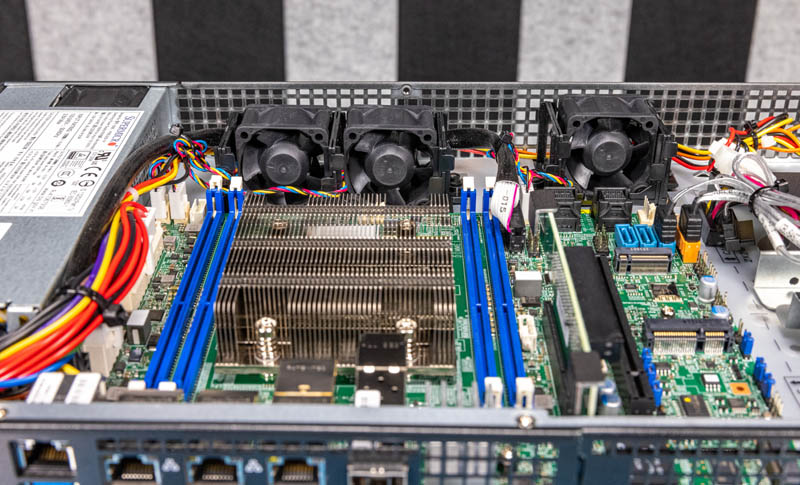
One of the key differences between this system and the E300-based system is also the expansion. Here we can add a PCIe Gen3 x8 card to the system in order to add additional flexibility. This is commonly going to be something like another network card, but it could also be another accelerator or even an external SAS HBA/ RAID controller.
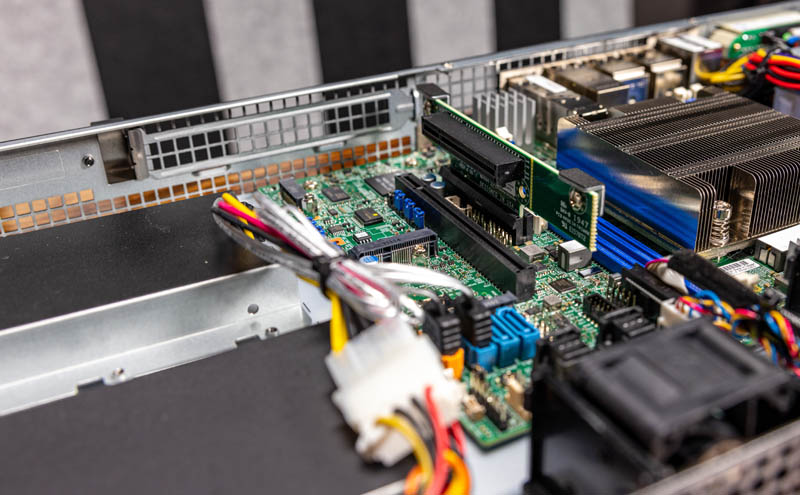
In terms of expansion, there is more here than just the PCIe x8 riser. Given the small form factor, the x8 slot is used for the PCIe riser and is effectively the only one that can be used in this system. The additional chassis fan is used to cool this card and area. Components here are lower to allow more clearance for the expansion card. We will quickly note that it is a bit of a bummer that this is limited to a x8 slot not a x16 slot, however, this is also a system with only a 200W PSU so there are other system design aspects at play here.
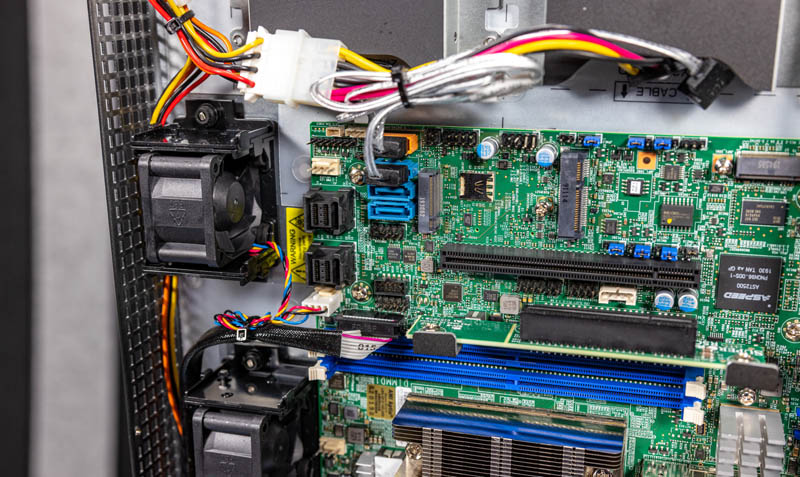
On the motherboard, we also get a mPCIe slot, a M.2 2280 (PCIe 3.0 x4), and a M.2 B-key slot for wireless WAN connectivity. There is even a SIM card slot under the B-Key 3042 slot. This adds a lot of flexibility and the addition of options for WWAN makes it clear that this was designed to service a number of OEM needs.
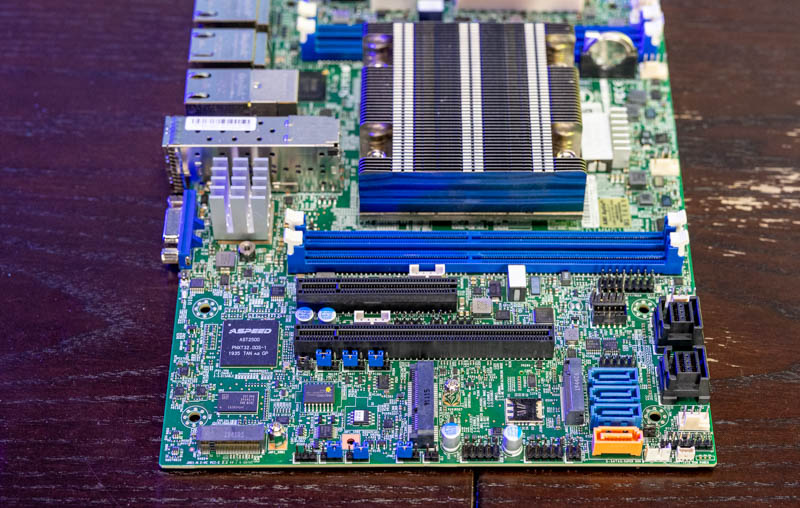
For SATA SSD connectivity, there are four onboard standard 7-pin SATA ports. One of these ports is a SATADOM port that can power a SATADOM without a cable. It also has two high-density ports which can each break out into four additional SATA ports for twelve total. Installed in our system we have the two 2.5″ drive brackets wired for SATA. Supermicro makes dual-drive brackets for these spots, but that will likely block the PCIe expansion slot space.
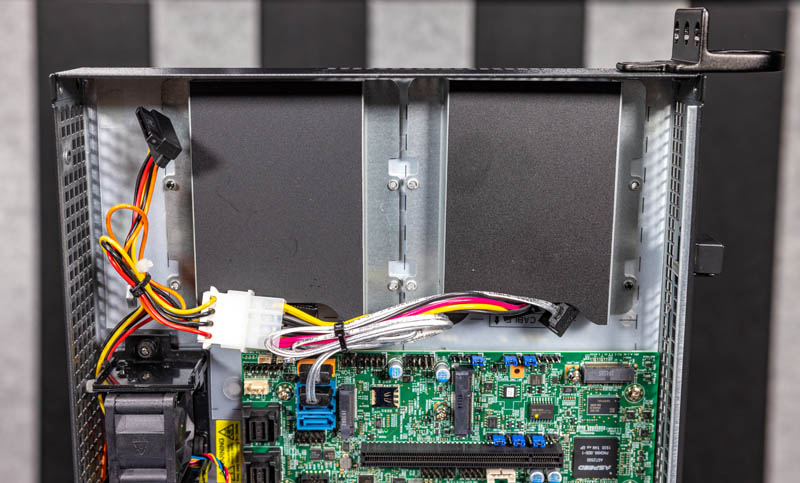
The system itself is powered by a 200W 80Plus Gold power supply.
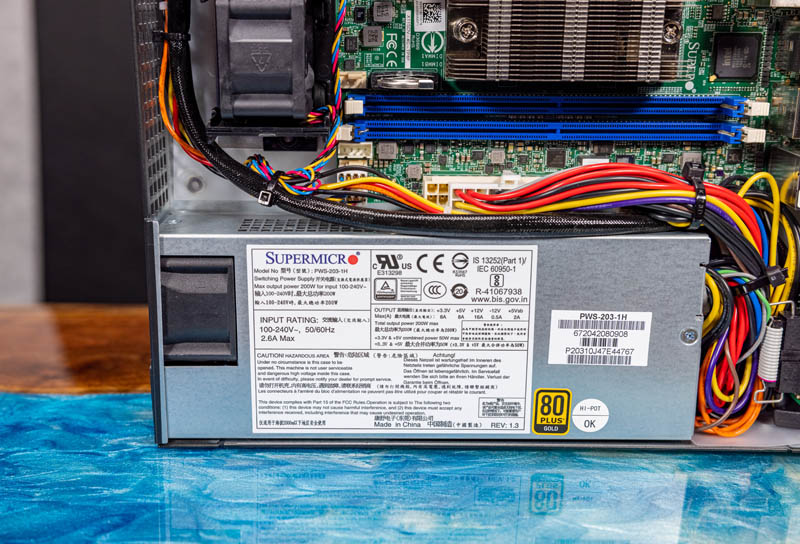
In this system, it uses 20 of the 24 pins on the ATX power supply.
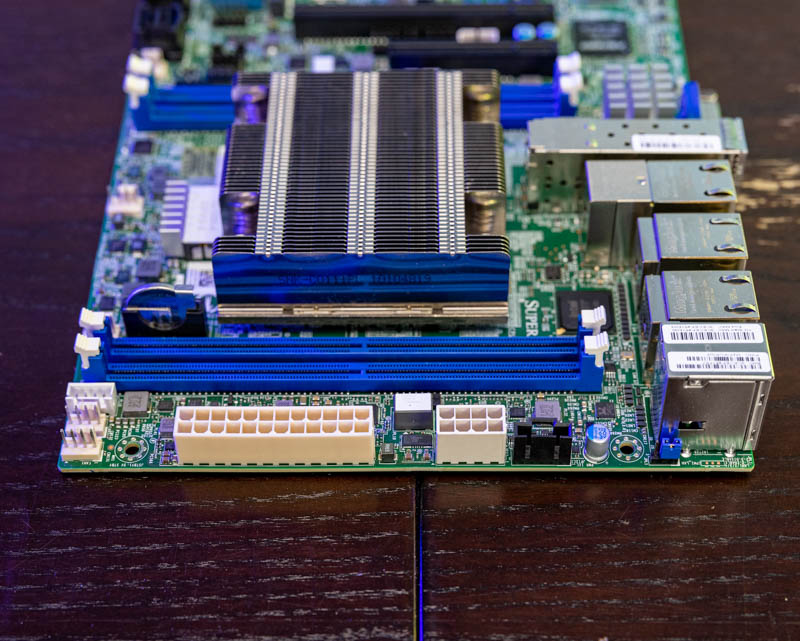
Overall, if you are rack-mounting your system, we like the hardware of the SYS-5019D-4C-FN8TP better than in the E300 chassis because it provides slightly more room. You can rackmount the E300 version of this system as well, but over time we have preferred the 1U platform for our use cases.
Next, we are going to get to the block diagram before moving on to management, performance, power consumption, and our final words.

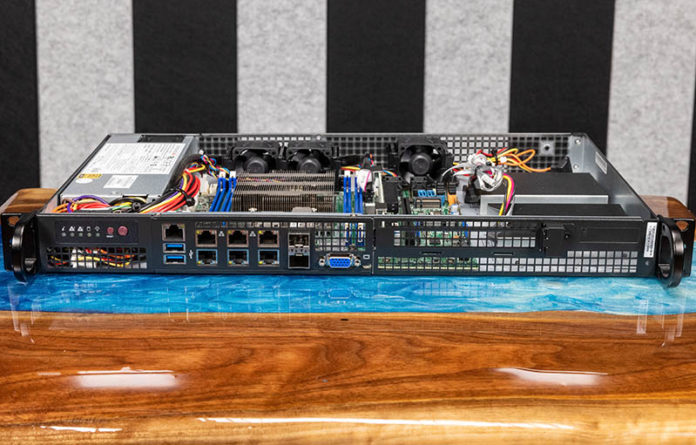



The QNAP qgd-1602p poe switch/server that was recently released seems to hit a lot of the marks of this chassis at lower price point, just the atom line of processors available but still intriguing.
Supermicro X11SDV-4C-TP8F system
Hi where can I buy this complete system from like the one in your review thank you
Kelly
As far I see, there is no possiblity for PCIe expansion on this platform, am I right?